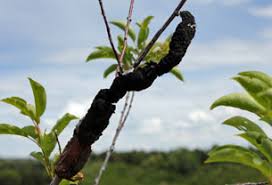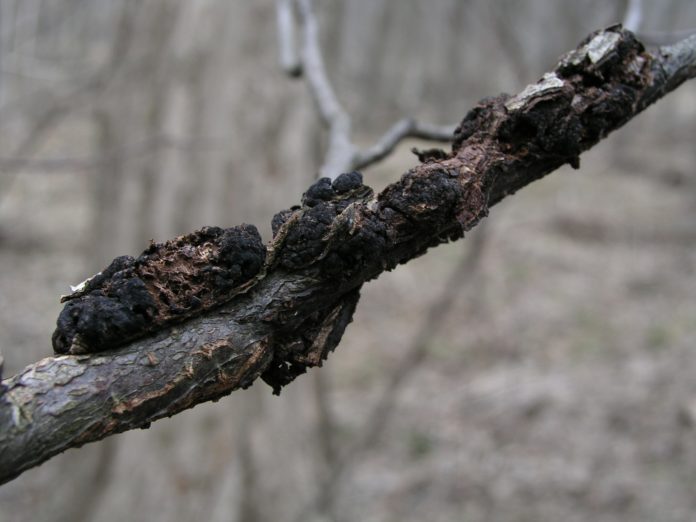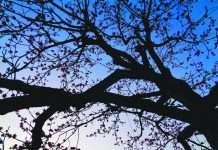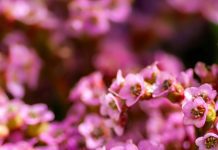by Ravenmoon Spicer
Do you have a Chokecherry tree in your yard? What about a Mayday tree or a Lilac tree? Be sure to check on it for a black, lumpy growth on its branches. It may be infected with black knot fungus—a disease that only affects the genus “prunus” family trees. Although the fungal disease is rarely fatal, if left unchecked it will affect the health of your tree and possibly affect the trees of your neighbours as well.
Black Knot Fungus may be recognized by the clumpy-looking, black masses of abnormal growth on the branches of your prunus family trees. The black knot is easily identified with its hard, uneven, black galls that seem to enwrap twigs and branches. Black knot is a slow developer often taking a season before its visually apparent and producing spores appear. If left to grow, it effectively strangles new growth, girdling branches and dooming the tree to deterioration and poor fruit production. Insects and plant diseases use the galls as an entry to the tree.
What You Can Do:
To manage Black Knot Fungus, the City of Calgary says that it is essential to prune off the infected branches 2-4 inches below each “knot” and dispose of them so that they go to the landfill. Between each cut, sanitize your tools with a bleach-water solution (25% bleach to 75% water). The fungus is transported by spores, so the proper sanitization of pruning
tools is very important to limit its spread from tree to tree. Do not allow twigs or other cuttings to fall to the ground where the spores could still survive. Do not compost these branches.
The best time to prune if during the late winter because this is when the fungus is dormant, and the abnormal “knotty” growths are easier to see. Avoid pruning in the spring! This is when the fungus is most active.

For the health of the tree, the City of Calgary recommends that citizens educate themselves in proper pruning techniques or hire the services of a certified arborist. Pruning a tree or shrub leaves a wound, requiring the tree to heal itself. Therefore, correct pruning provides the tree with optimal condition for healing properly.
Other trees that tend to get infected by Black Knot Fungus are peach and apricot.








